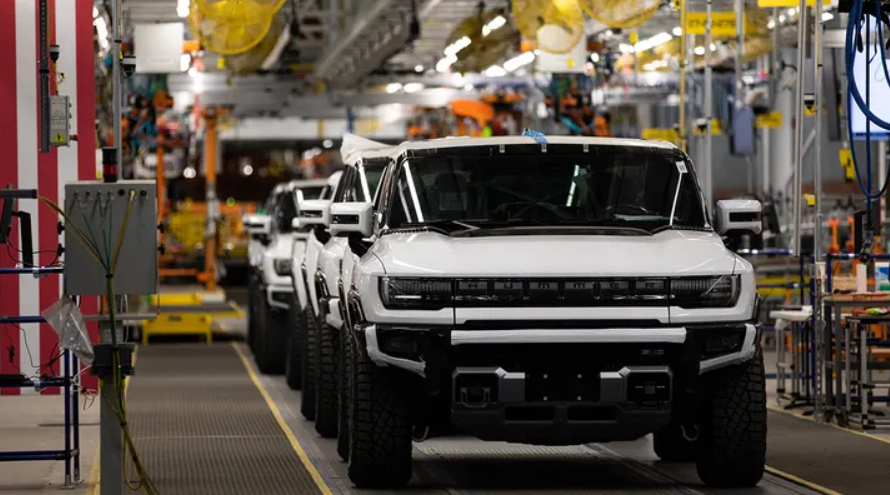General Motors (GM), once at the forefront of the electric vehicle (EV) industry, has made a surprising announcement: it is abandoning its self-imposed target for EV production through the middle of next year due to weakening consumer demand. This strategic pivot comes as a significant shift for a company that has been a pioneer in the electric mobility space.
This decision was made even as GM reported a robust third-quarter profit, despite grappling with the ongoing United Auto Workers (UAW) strike that has been impacting the company since mid-September, resulting in a staggering weekly loss of about $200 million.
During the July-to-September period, GM’s net income fell by 7% to approximately $3.1 billion. The strike’s impact, coupled with increased expenses on warranty repairs, contributed to this drop in income. Nevertheless, GM managed to offset these challenges with strong pricing, as consumers continued to show interest in purchasing vehicles, despite higher interest rates and a slowing economy.
Surpassing analysts’ expectations, GM reported an operating profit of $2.28 per share, compared to the estimated $1.87 per share, according to FactSet. However, due to the ongoing strike’s uncertainty, the company has withdrawn its full-year profit guidance.
GM had initially planned to produce 400,000 EVs over a roughly two-year span by the middle of next year but has now abandoned this goal. Paul Jacobson, GM’s Chief Financial Officer, pointed to a slowdown in the market for battery-powered cars as the reason behind this shift in strategy. However, GM remains committed to its objective of producing one million EVs in North America by the end of 2025.
Jacobson explained this shift by stating, “We saw this as an opportunity to actually push it out a year before we significantly scale up EV output.”
The UAW strike, affecting GM, Ford Motor, and Stellantis (Chrysler’s parent company), has persisted for six weeks, with approximately 40,000 workers participating in picket lines across these three automakers. This accounts for roughly 27% of their unionized U.S. factory workers.
GM has felt the impact of the strike the most, with losses totaling approximately $800 million so far, a quarter of which occurred during the third quarter. The strike has continued to cost GM around $200 million weekly, with assembly plants in Michigan and Missouri affected and a third factory idled due to supply-related ripple effects.
This strike came at an inopportune time for GM. Earlier this year, the company had raised its operating-profit guidance twice, most recently in July, projecting a range of $12 billion to $14 billion, and was on track to achieve this goal. Jacobson remains optimistic about reaching a labor deal soon.
In parallel negotiations, the UAW and the Detroit automakers, including GM, are discussing new contracts lasting more than four years. As of last week, all three companies had presented offers that included 23% wage increases over the contracts’ duration.
UAW President Shawn Fain has argued that the companies have more to offer, pushing for inflation protections, improved pay for temporary workers, and a quicker increase in the pay scale for new hires.
Despite these challenges, GM’s third quarter showed strong financial performance, with resilient selling prices and consistent consumer demand for vehicles. The average selling price for a GM vehicle during this period was about $50,750, only a slight decrease from the previous year, despite analysts’ expectations of a more significant drop in consumer spending on new cars.
Jacobson noted, “The consumer has held up remarkably well,” emphasizing that consumer demand has helped maintain pricing levels better than expected as the automotive industry moves into 2023.
However, GM did face headwinds in its international market, with income from China dropping by 42% to $192 million. GM, like other global automakers, continues to grapple with pricing pressures and the ascent of Chinese EV brands in an increasingly competitive market.
(Source: Mike Colias | WSJ)









